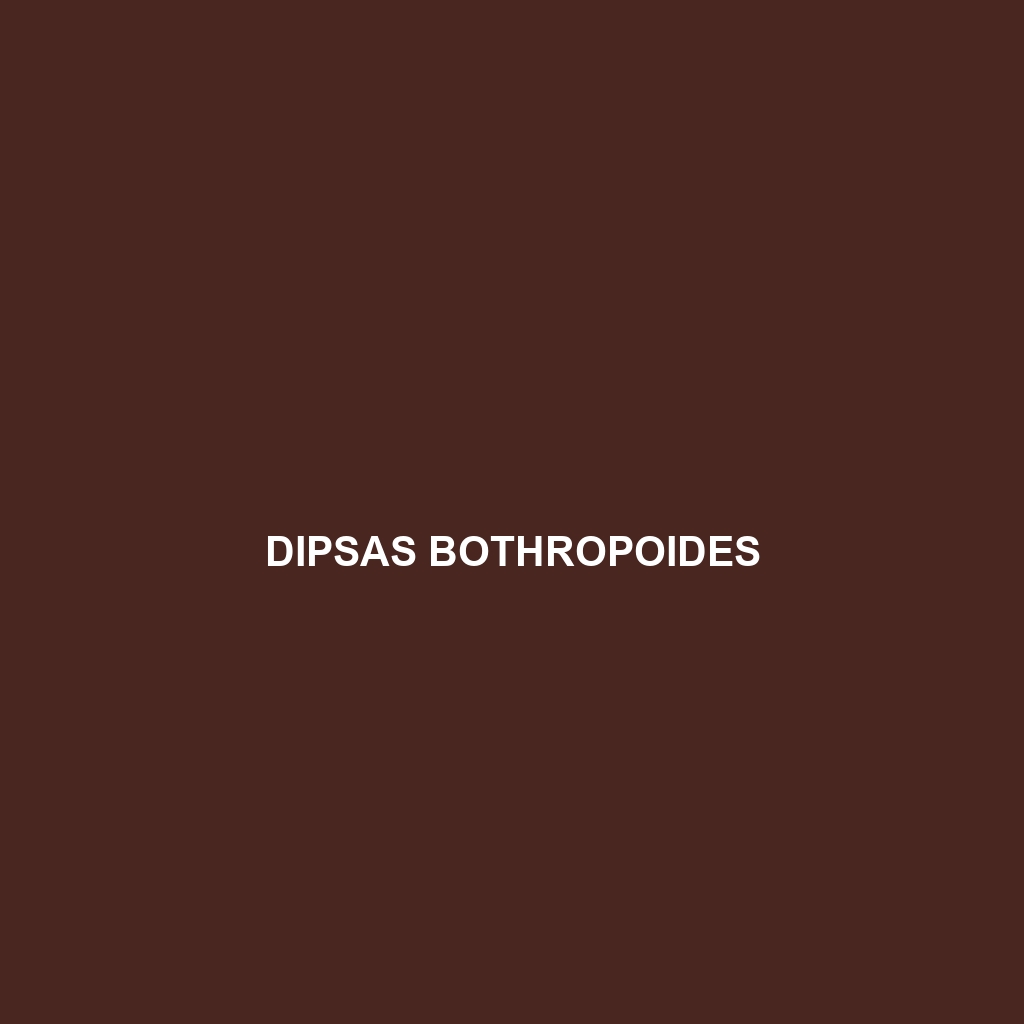-

Dipsas oneilli
intriguing Dipsas oneilli, or Oneill’s snail-eater, a medium-sized, non-venomous snake native to the rainforests of Central and South America. With its striking dark brown and olive-green coloration, this nocturnal predator plays a vital role in controlling snail populations while thriving in humid, lush habitats.
-

Dipsas nicholsi
Nichol’s snail-eating snake (Dipsas nicholsi), a medium-sized, nocturnal serpent thriving in the tropical rainforests of Central America. Known for its slender body and distinct olive-green or brown coloration, this vulnerable species plays a vital role in controlling snail populations and maintaining ecosystem balance.
-

Dipsas maxillaris
Dipsas maxillaris, also known as the large-eyed snake, a medium-sized, nocturnal predator found in the humid forests of Central and South America. With its distinctive coloration and large almond-shaped eyes, this secretive species primarily feeds on slugs and snails, playing a vital role in its ecosystem.
-

Dipsas incerta
Dipsas incerta, or snail-eating snake, a non-venomous species found in Central America’s tropical rainforests, characterized by its stunning mosaic coloration and specialized diet of terrestrial snails. This elusive, nocturnal predator plays a vital role in maintaining ecological balance by regulating snail populations within its habitat.
-

Dipsas gracilis
Dipsas gracilis, or slender snail-eater, a captivating snake species native to the tropical rainforests of Central and South America. With its elongated body, head shape, and specialized diet primarily consisting of snails, this nocturnal predator plays a crucial role in maintaining the ecological balance of its habitat.
-

Dipsas ellipsifera
Dipsas ellipsifera, or elliptical snail-eater snake, a medium-sized, nocturnal predator native to the tropical forests of Central and South America, primarily feeding on gastropods. With its distinctive brown and grey bands, this fascinating species plays a crucial role in controlling snail populations and maintaining ecological balance in its habitat.
-

Dipsas bobridgelyi
fascinating Dipsas bobridgelyi, a non-venomous snake native to the humid forests of the eastern Andean slopes in Colombia, known for its reddish-brown coloration and nocturnal, arboreal lifestyle. Important for controlling mollusk populations, this Vulnerable species lays eggs during the moist season and showcases impressive camouflage, making it a captivating addition to any herpetology enthusiast’s collection.
-

Dipsas albifrons
Dipsas albifrons, or white-fronted snake, a slender and nocturnal species native to the humid tropical rainforests of Central and South America, recognizable by its striking brown and gray coloration, pointed snout, and gentle temperament. This fascinating predator primarily feeds on slugs and snails, playing a vital role in maintaining ecological balance within its habitat.
-

Dipsadoboa montisilva
captivating Dipsadoboa montisilva, a striking non-venomous snake native to the cloud forests of the eastern Andes, known for its remarkable camouflage, nocturnal behavior, and role in maintaining ecological balance. Thriving in lush habitats, this species has adaptations, including excellent climbing abilities and a diet primarily consisting of small mammals, birds, and lizards.
-

Dipsadoboa kageleri
captivating Dipsadoboa kageleri, a slender, nocturnal snake found in the humid forests of Central and West Africa. Known for its striking coloration and reproductive habits, this species plays a vital role in its ecosystem as both predator and prey.
Search
Popular Posts
-
Lygosoma corpulentum
Discover the Lygosoma corpulentum, or fat skink, a robust insectivorous lizard native to Southeast Asia’s moist tropical rainforests and varying habitats. With a stocky body, impressive camouflage, and remarkable adaptability, this ovoviviparous species plays a crucial role in maintaining ecological balance.
-
Lygosoma boehmei
Lygosoma boehmei is a slender, nocturnal insectivore found in humid tropical rainforests and savannas of Southeast Asia, exhibiting a smooth, camouflaging texture and remarkable burrowing abilities. This vulnerable species plays a crucial role in its ecosystem by controlling insect populations and serving as prey for larger predators.
-
Lygosoma bampfyldei
Lygosoma bampfyldei, commonly found in tropical and subtropical regions, is a moderately sized lizard measuring 15 to 25 cm, known for its elongated body and glossy, camouflage coloration. This insectivorous species thrives in moist habitats and plays a vital role in maintaining ecological balance by controlling insect populations.
Categories
Tags
animal adaptations (924) animal behavior (5000) animal reproduction (865) behavior (920) biodiversity (7853) conservation (1670) conservation efforts (1778) conservation status (5748) diet (2104) ecological balance (2087) ecological role (1952) ecosystem (1469) ecosystem role (2901) endangered species (2514) habitat (3280) habitat conservation (1136) Habitat Destruction (1421) habitat loss (3385) herpetology (870) insectivorous reptiles (948) IUCN Red List (1971) lizard behavior (881) lizard diet (944) lizard reproduction (1101) nocturnal animals (2754) nocturnal behavior (2592) nocturnal reptiles (1061) physical characteristics (2058) predator-prey relationships (927) reproduction (2890) reptile behavior (1037) reptile conservation (1348) reptile reproduction (1069) rodent species (1325) seed dispersal (2145) Seed Disperser (979) small mammals (1168) snake behavior (952) snake diet (1061) snake reproduction (1129) tropical forests (948) Vulnerable Species (4926) wildlife (2511) wildlife conservation (5355) wildlife protection (1008)


